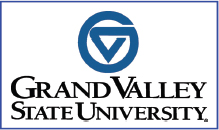The Scaffolded GVSU Co-op to Interdisciplinary Industry-based Capstone Project Program
Lead Institution: Grand Valley State University, Allendale, MI
Collaborating Institutions: Over 220 partner organizations from 1993 to 2011, including for-profit industry partners, governmental (municipalities, state/federal entities), and educational (primarily other universities)
Category: Co-Op
Date Implemented: August 1987
Website: www.gvsu.edu/engineering


Program Description: The objective of this program from its inception has been to prepare graduating engineers who are truly “industry ready” as they move from their undergraduate programs into the industry sector. The major activities of this program include: (1) A cooperative education program that is integrated into the undergraduate experience for all engineering students. Elements of this include: a cooperative education preparation course that provides the students with background regarding the expectations of employers, real-world ethics case studies, and the processes for placement with an employer; three semesters of co-op experience which are supervised by both an industry supervisor and a faculty member, including work experience, reflective journaling, online modules addressing topics such as ethics and engineering economics, and faculty site visits. (2) The industry-sponsored interdisciplinary capstone project program, in which interdisciplinary teams of engineering students are formed into “contract design and build” project teams; all projects are sponsored by industry partners drawn from the co-op employer base who act as customers; engineering faculty guide the student teams and act as additional technical and managerial resources; and the finished products are delivered to the sponsor companies and generally go into immediate use in production, testing, or new product introduction. A project is deemed to be successfully completed when it is accepted not only by the faculty, but also by the industrial sponsor. In addition to academic reporting and design documentation, typical project deliverables include user’s guides and troubleshooting manuals. The units involved in this “scaffolded” approach to preparing graduates for engineering practice include all engineering disciplines engaged in the cooperative education program through supervision of co-op students (computer, electrical, interdisciplinary, mechanical, product design & manufacturing) and the Career Services Office and the Career Counseling Center, which partners with the School of Engineering in the preparation, placement, and supervision processes for co-op students. All engineering disciplines engage in the capstone project program through team teaching of the courses and supervision of the projects.
Anticipated and Actual Outcomes: Many of the program outcomes outlined by ABET are formally identified and regularly assessed as outcomes for this program. ABET outcomes d, f, g, h, j, and k are formally assessed during the coop program, including direct feedback on individual students by industry supervisors from the student’s workplace. ABET outcomes c, d, i and j are formally assessed during the capstone senior project. Students have achieved levels of 75% or higher for all program outcomes identified. Other outcomes realized through this program include high retention and graduation rates of students in the academic majors, regular interaction with industry partners that have led to several industry-sponsored projects in other courses at the junior and senior level in the curriculum, and a high rate of success among the students sitting for the FE exam each year.
Assessment Information: The assessment plan for the co-op experience consists of assessment of students every semester from early in the junior year through the time of graduation by industry supervisors. In addition to ABET outcomes, each student is assessed for their work habits, completion of work products, technical knowledge and competence, and interaction with others inside and outside the organization. In addition, the faculty adviser for each student conducts visits to each worksite and meets with the student and worksite supervisor to review the student’s work. Students also complete assessments of their co-op experience. The senior capstone program is assessed yearly for ABET outcomes. In addition, industry partners on the projects provide continuous, real-time feedback to the students and faculty coordinators as the sponsored projects are being completed. This assessment data is reviewed and evaluated at least once per year by each academic program and is used for continuous improvement of each program on an annual basis.
Funding/Sustainability: Creation of the cooperative education component was supported by over $300,000 in funding from our industrial partners to support faculty time. Creation of the senior project program is funded by participating companies and ranges from approximately $75,000 for the first year of operation to up to $250,000 in recent years. Support has been continuous since 1987 for the co-op program and 1998 for the capstone project program. Sustainable funding for the cooperative education program has been accomplished through creating an endowed chair to play a primary role in coordinating the engineering co-op program, hiring an Associate Director and Director of Engineering Cooperative Education within the Career Services Office, and integration of the supervision of coop students within the teaching assignments of engineering faculty, which results in the use of approximately 2 FTE faculty each year. This is an element of the ongoing base budget for the School of Engineering.

